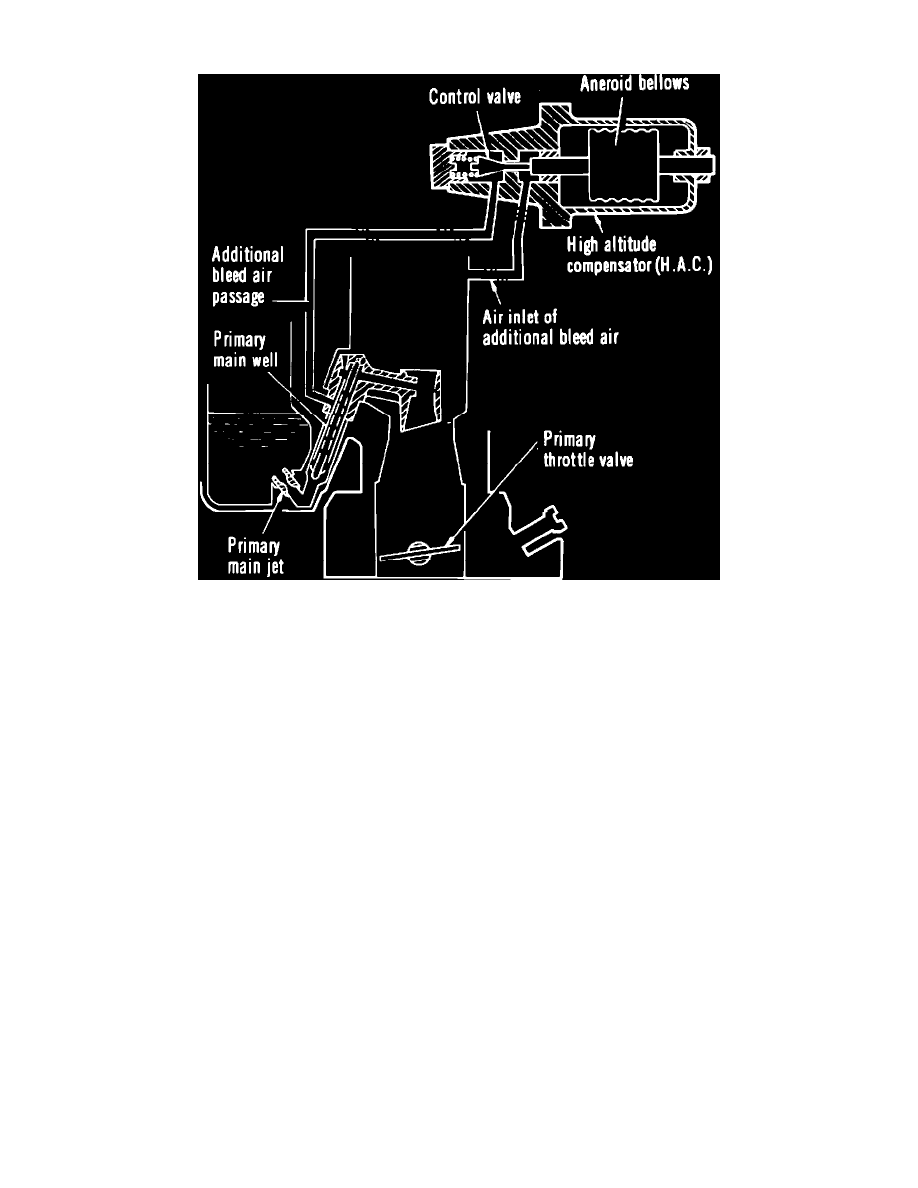D50/Ram 50 L4-1997cc 2.0L SOHC (1984)

Altitude Compensator: Description and Operation
Fig. 24 High altitude compensation system.
HIGH ALTITUDE VEHICLE
This system, Fig. 24, is used to maintain the correct air/fuel mixture should the vehicle encounter atmospheric conditions normally present during high
altitude operation.
A small bellows chamber, mounted in the engine compartment, is connected to the carburetor through hoses and is vented to atmosphere. Atmospheric
pressure expands or contracts the bellows as necessary. A brass tapered seat valve is used to regulate the air flow accordingly.
When a rarefied atmosphere is encountered, the air/fuel mixture becomes increasingly rich. At a pre-determined atmospheric pressure, the bellows
expands, causing the tapered seat valve to lift off its seat and allow additional air to enter the main air bleeds. This additional air, when combined with
the air available, provides the system with the proper amount of air necessary to maintain the correct air/fuel mixture. When encountering different
altitudes, the system provides varying amounts of air as needed. Once sufficient atmospheric pressure is restored, the tapered valve closes, enabling the
system to return to its normal operational mode.
Some models equipped with automatic transmission use a vacuum delay valve to delay the vacuum signal to the secondary throttle valve diaphragm
chamber. This delay helps to decrease carbon monoxide and hydrocarbon emissions during vehicle acceleration.
